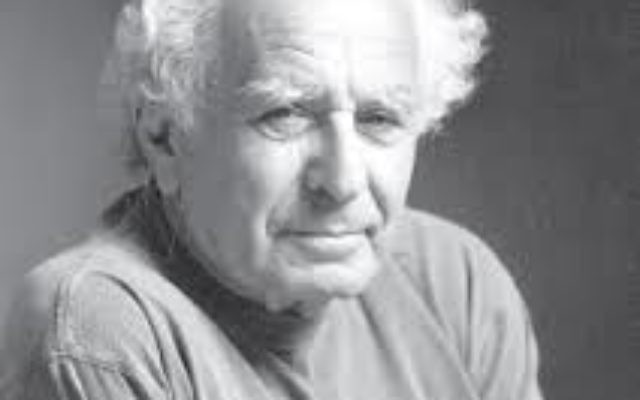Exile and Our Dreams of Israel
One Man’s Opinion by Eugen Schoenfeld
This is the first of a four-part series examining the Jewish people’s eternal longing for Israel.
Tisha B’Av, the ninth day of the Hebrew month of Av, is just around the corner. This day was designated by the rabbis as a national day of mourning.
While historically it was the day when the Romans destroyed the second Temple, also known as Herod’s Temple, it became a symbolic representation of the culmination of historic Jewish tragedies. We designated this day as the date when both Temples, that of Herod (70 C.E.) and that of Solomon (587 B.C.E.), were destroyed. Supposedly, it was also the day in 1492 when the Catholic Inquisition supported a royal decree that commanded the expulsion of Jews from Spain.
All of these events were followed by the exile of Jews from their homeland. Being forced to live outside Israel had a great impact on exiles’ perception and definition of their homeland.
With each subsequent exile, a new image of Israel was created, and a new idea of what Israel is or should be as a former homeland. Let me review these tragedies and the relationships.
The first such tragedy occurred when Israel, the northern Jewish kingdom, was defeated by the Assyrian armies during the expansion of their empire. In 742 B.C.E., Tiglath-Pileser, king of Assyria, defeated Israel and enslaved its population. Israel’s people were carried into exile and dispersed throughout the kingdom.
These 10 tribes are considered lost tribes because they integrated into the various societies into which they were dispersed. To keep their memory alive, many legends were constructed about them; for example, they are described as red-haired giants who lived in isolation in an unknown area beyond the legendary river Sambatyon.
In reality, however, they intermarried and integrated, and most likely their descendants are Muslims in various Middle East countries.
Less than 200 years later in 578 B.C.E., Judaea, the southern Jewish kingdom, was destroyed by Nebuchadnezzar, king of Babylon, who took the Jews, at least the scholars and leaders, into captivity in a Babylonian city by the rivers. They stayed as captives but maintained their identity and their hope to return to their land of origin, to Israel.
In Babylon, Jews developed a dual identity: They adjusted their lives so they simultaneously could be Babylonians and Jews. They accepted the rule of the Babylonians as legitimate and were taught to submit to the law of the land: Dine de malchuta dine, the law of the land is the law.
All the while, Israel was maintained as the land of their ancestors, their legitimate abode, the place, G-d willing, into which all Jews from the four corners of the world would be brought back.
This perspective became the model that expressed Jewish belief in lands outside Israel.
There was one additional perspective rooted in the Torah’s tocheychah, namely the warning about forthcoming punishment. In the biblical collection of verses named the Kinot (Lamentations), assumed to be written by the prophet Jeremiah, the author proclaims that Judaea was destroyed because of its sins, because the Jews rejected G-d’s teachings.
The lamentations end with a ray of hope: If we call G-d and repent, He will bring us back to the land and restore our lives as they were. This is the eternal promise of G-d, one that each year we invoke on Passover, that regardless of our subjugation in lands that are not ours, G-d will redeem us. Meanwhile, we live as strangers with the hope of once again becoming Jews in our own land.
This seemed to have been the view of the Jews exiled into Babylon. There are two poems in the Psalms that depict the mood, the hopes and the vision of those exiles. In Psalm 137, for instance, the poet tells us: “We sat at the banks of the Babylonian rivers, crying as we remembered Zion. We tried to sing the poems of Zion, but how can we do this on foreign soil, for it is more likely that I will forget my right arm than forget Jerusalem.”
But in the midst of the sadness, the poet in Psalm 126 tells us that it will be like a dream to us when G-d returns us to Zion. We will be filled with laughter and joyful songs as nations will declare that the Lord has done great things for them.
But during their 70 years of exile, the Judean exiles developed a modus vivendi in a foreign land. Fundamental to their lives was separation from the native population through the formation and centrality of the synagogue, where they could maintain communal existence and worship. It also was the place where we reinforced the belief that only Israel, especially Jerusalem and the Temple, retained the properties that bring us close to G-d.
It was this new form of worship where cultism began its demise among Jews, but still, for the sake of security, we adhered to it. While we believed that G-d fills the world, nevertheless His throne rests directly above Jerusalem with the city as his footstool. Babylon may have become our semipermanent residence, within which we flourished economically and intellectually, but Israel remained our spiritual home.
Jewish life in Babylon was in many ways equal, if not superior to, that in Israel. Jews in Babylon had a great degree of political and legal autonomy under the rule of their nasi (prince). The exiles developed three academies — Sura, Pumbedita and Nehardea — seats of learning and the birthplace of the Babylonian Talmud.
But the Jews there maintained emotional ties to Israel. At least in their prayers, they expressed the yearning for the coming of that miraculous period for which all Jews hoped: the time of the Messiah, when all Jews would be reunited in Israel.
Next in the series: The differences between the northern and southern kingdoms.





comments